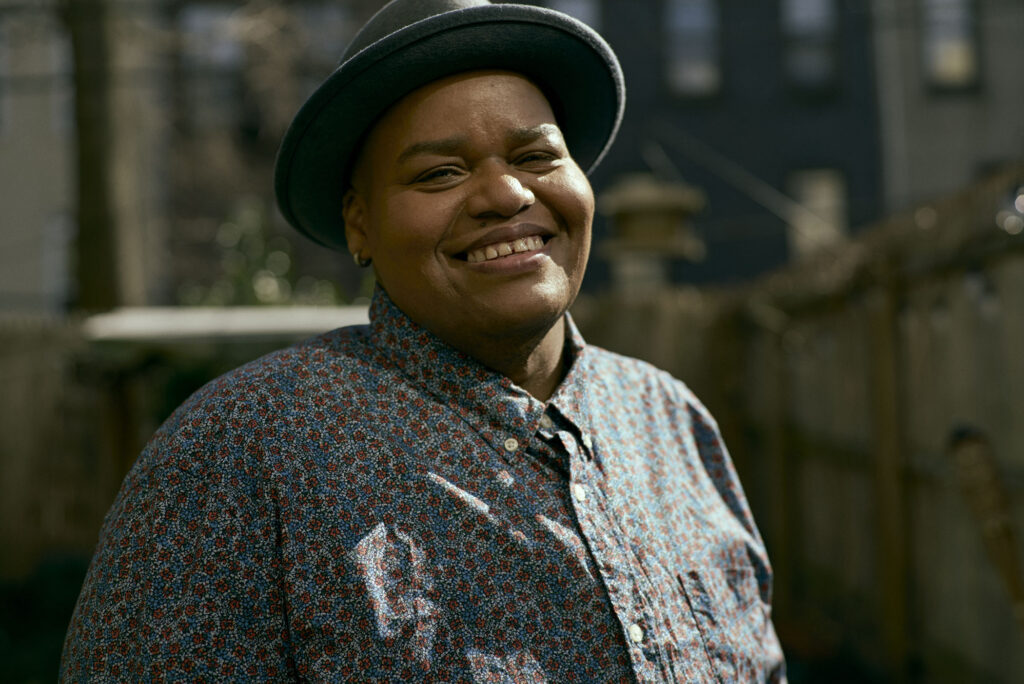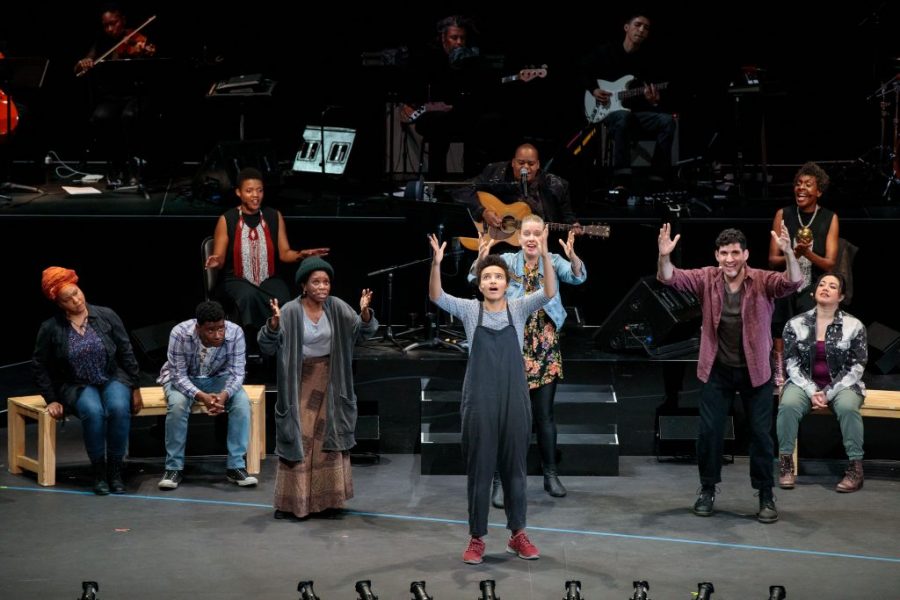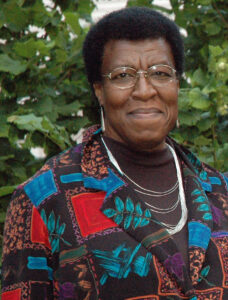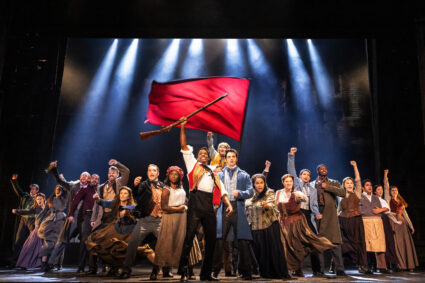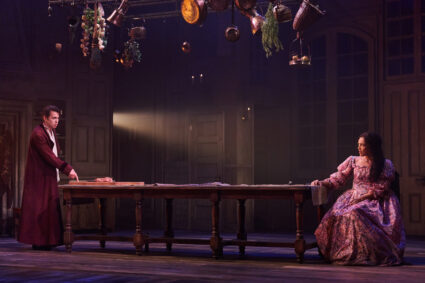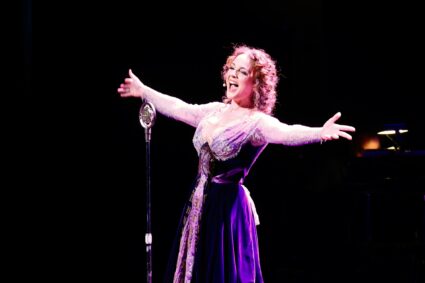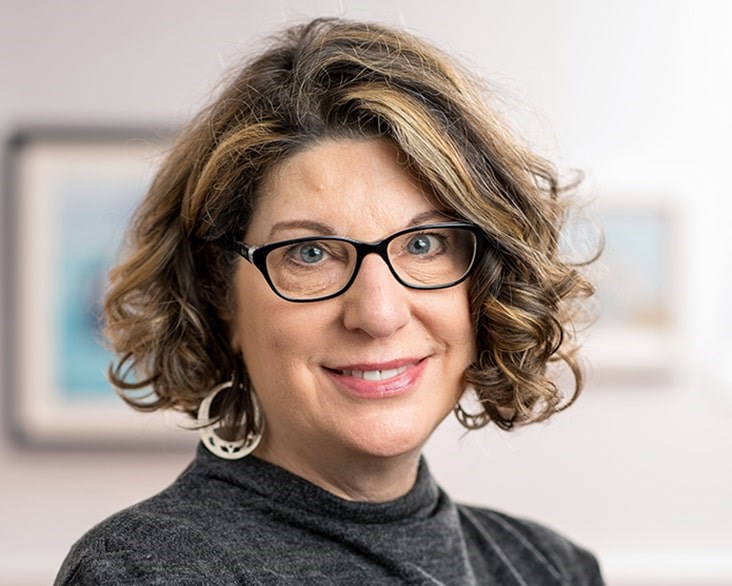
On this edition of THE INTERVUE, we’re going to be talking about this upcoming event it is called Parable of the Sower. Parable of the Sower is a triumphant mesmerizing work of rare power and beauty that illuminates deep insights on gender, race, and the future of human civilization. This fully staged opera brings together over thirty original anthems drawn from over 200 years of black music to create recreate Octavia Butler’s sci fi Afro futuristic masterpiece, live on stage with music and lyrics by Toshi Reagon and Bernice Johnson Reagon. This compelling work is night to Butler’s a claim science fiction novel of the same name.
And joining me to talk about this amazing, beautiful artwork coming soon to the Strathmore is Joi Brown, the artistic director and vice president of programming since 2015.
Miss Brown, welcome to THE INTERVUE, I’m so glad to be talking with you especially not only on mother Strathmore, but Octavia Butler is one of my favorite science fiction authors growing up. So it’s great to see this collaboration between Strathmore and the woolly mammoth theatre to collaborate on this project. And that’s at least into my very first question, How in the world that the two forces of Strathmore and woolly mammoth came together on this project we’re about to see?
Well, there was some long serendipity on this one. Both. Both organizations have history with Toshi Reagon, the creator of this project. Strathmore has had the privilege of presenting Toshi both on our concert hall mainstage, as well as in our nightclub space. And Woolly’s artistic director Maria gliomas has worked with Toshi at the Public Theater where she has a huge history, and was actually in the circle of people that were working on the original Parable of the Sower workshop.
So, both of us had some history with the artists both of us feel Toshi Reagon is one of those artists that you just have to keep watching have to keep paying attention to. We separately found ourselves interested in this project, and then found out that we were both talking about it both thinking about it and decided this was the project we needed to work on together.
And how long ago that you recognize Toshi work when you decided, when you both decided that this should be coming, this should come into Strathmore?
Right, it was actually pre pandemic, it was 2019. And the performances and the whole program has been rescheduled to different times because of the pandemic. So, we’ve been planning this, since it’s well before the pandemic, we talk a lot about all of us being on the terrible path, parable passes, but quite long to get to this moment. So, it feels it feels absolutely amazing to finally be in the final countdown the last two weeks before the performance. And it’s been it’s been an amazing process.
Now discuss the expanding programs, the fellow program that accompanies the production.
There’s a lot of extra activity going around on going with this project. I think part of Toshi is his creative process involves really asking the institutional partners that work with her, what is it that you can do? What is the power of one – one is the power of one institution, one individual? And so because that’s the theme of the production and because Toshi is an example of a catalytic kinds of artists that really is involved in social activism, we really broaden that conversation.
So not only are there opportunities for audience members to participate in sessions conversations, some that have already taken place. He’s online, some that are taking place before the performance. But we’ve also launched a program with Woolly called the Arts and Social Justice Fellowship, which is specifically targeted to high school students who find themselves at the intersection of arts act, arts and activism. So we’ve selected eight high school students, and we will continue to do so every year. And we’re providing them with resources so that they can really start exploring their own voice and their own ability to activate social change through their arts creation.
Now, did you have a certain criteria of what you’re looking for within the high school students for this program itself?
Yeah, there was a fairly rigorous invitation process and interview process. So we had about two dozen students that applied to be in its inaugural season. They had to write an essay talk a little bit about their backgrounds, their work, their goals, their dreams, that group of people was narrowed to a smaller group. And then there was an interview process with all the finalists before the final eight were selected.
Do these eight students come from Montgomery County, Prince George’s County or outside of the school districts?
Outside the school district as well. So it’s very much the DC metro area as well as Maryland.
What do you hope guests will take away from watching the show on April 28-29?
I think two main things one is to be inspired again, toesies voice and the production itself is so moving and so authentic. It really just cuts through to the heart in really meaningful ways. So, we want we want people to be uplifted and inspired by the production and by the kinds of music and the kinds of messages that are out there. But we also want people to sort of remember the power of their own abilities, the power of one person who makes a change, who takes risks and who is brave and steps to the front, which of course is is that the main character of Parable of the Sower, Sower. So, we want those two things to really be received and taken to heart.
Were you familiar with Octavia Butler’s work before taking on the project?
Just a little bit, Octavia Butler was somebody that I read a little bit about. And so certainly as as with a lot of programming, if you look to your artists, the artists can lead you to widen your own perspective. So I’ve been I’ve been very happy to dive into the work as part of my own learning and preparation for this project.
You mentioned a moment ago that there’s also some pre show events are happening within the two days of the show. One of them is the “Parable Effect, how black feminists, art and Afrofuturism influence social change.” And can you tell us a little bit more about this pre show the first one.
It’s been put together by our education team who has done a wonderful job of really picking up these different themes and working with them. So they’ll be working to really understand the generations of black feminist artists that had been part of creating courageous works, and really picking up on the themes of the project. The two artists who are leading this project are both artists that the Toshi Reagan has had connections with. So they, they bring a very natural extension of the work and a lot of insight.
In your humble opinion, what does art mean to you personally?
Oh, my gosh, that’s such a big and good question. It’s, its soul hits the soul of the people and it’s humanity. It is, it is a nonverbal, nonspecific source of energy, that that has the ability to lift up people and to inspire populations. You know, I think it’s constantly bypasses my head, and it goes right to my heart. And I think that’s, that’s, that’s why it’s essential.
Parable of the Sower is coming this Thursday & Friday, April 28-29 at 8pm and at the Music Center at Strathmore tickets are available at www,strathmore.org
